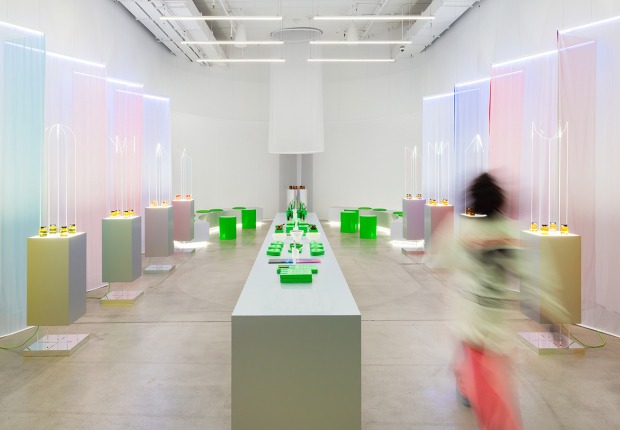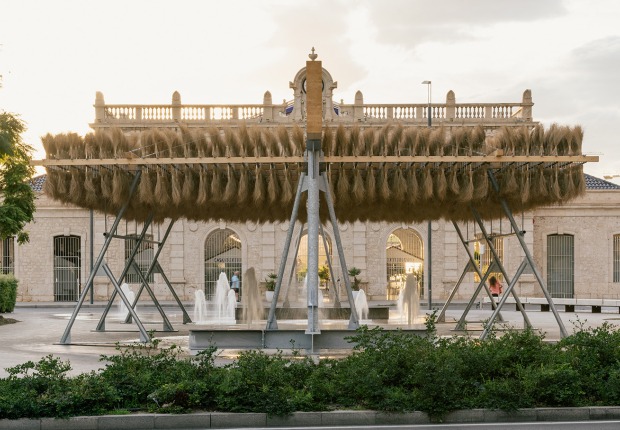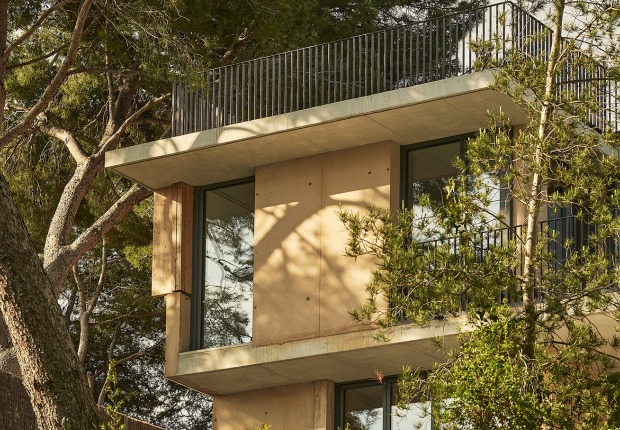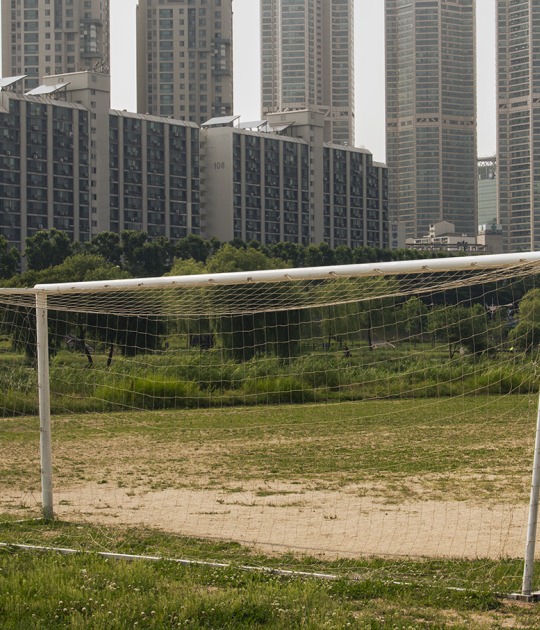Always starting from the same concept—the goal as the frame and scale of a built space—each image speaks of a different location. What remains constant is the geometry of the rectangle; what changes are the urban contexts, the densities, the light, the materials, and the aspirations that each city projects onto its territory. Thus, the series becomes a visual atlas of contrasts, where the uniformity of the universal sport is confronted with the diversity of the built environment.
Over time, geographical and sociological elements have filtered into his images, providing new interpretations of a body of work that, although based on a serialist logic, transcends the purely formal. An example of this can be seen by comparing the photograph of Kyiv, taken weeks before the war, with that of Songdo, in South Korea, where one subjectively anticipates the destruction of war and the other frames a society in the throes of economic boom.

Sharjah: Football goals by Manuel Álvarez Diestro.
The photograph taken in Eibar, in the Basque Country, for example, shows a city that projects vertically due to the lack of space, where artificial turf interacts with the intensely green valley below. The contrast between this photograph and the urban developments of Asia is evident, where the scale of the goals remains constant, but the buildings surpass those of Eibar in density and height.
Álvarez Diestro also reflects on how, in some of his images, the urban architecture is framed within the goalpost, while in others it appears as just another element of the landscape.

Oman: Football goals by Manuel Álvarez Diestro.
The project was carried out on foot, both in and around cities, and, in some cases, such as in Oman, the photographs come from hard-to-reach environments, captured in inhospitable places where football and the landscape coexist in silence.

































